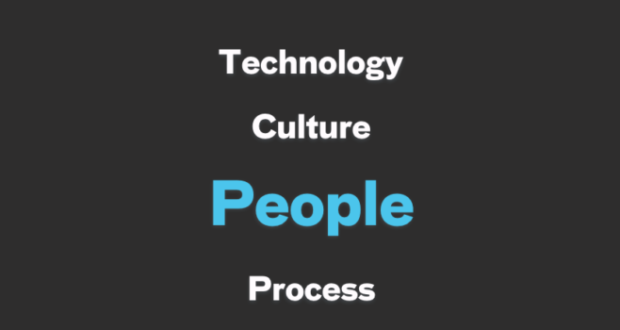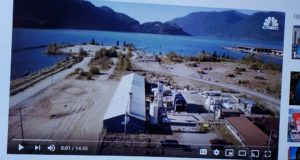This post originally appeared @Clearhead.me
As we all know, human beings are complex creatures. And multiple things can affect the output we have at work–from things going on in our personal lives to the complex interactions we have with our bosses or other employees.
However, something I’ve seen over the last 15 years of working both on the brand side and as a consultant is a lack of engagement from employees with their work. The folks at Gallup, who run a daily employee engagement poll, tend to agree, reporting that over ⅔ (70%) of American workers are not engaged with their current jobs.
Surprised? So was I. As you can imagine this lack of engagement is a huge underlying problem for employers of all shapes and sizes. So…how do we fix it? What can we do to better engage those employees?
That’s the core issue I write about in my new book, IGNITE: Setting your Internal Culture on Fire with Innovation. It’s part field guide for developing innovative products and part primer on changing your culture. As I’m sure you’re aware, both of these are vitally important for the survival and growth of your business. Not only that, they’re highly interdependent.
Widening the Innovation Aperture
The general goal of innovation is to drive measurable progress through change, to create incremental value and to improve processes, products and experiences. It’s important to view innovation with this wide lens and resist the urge to focus on tangible products. Economists and academics are adept at this. The products will come, but first you have to engage your employees in identifying your biggest problems (at Clearhead we do that through our Problem Solution Mapping methodology).
Innovation can help a business develop by growing an idea into something tangible, but that can be an exceptionally messy process. It can be nonlinear in nature and almost impossible to predict. But it doesn’t need to be that hard, that convoluted, that unpredictable.
Mature businesses need to find ways to continuously grow their revenues. As I discuss in IGNITE, innovation is not a strategy that is limited to startups or the tech industry. Rather, it innovating new products and categories should be key tactics in the growth plans of every company–from nonprofits to well established category leaders.
The IGNITE framework is designed to provide business leaders with the vision to reach this sweet spot, transforming ideas into actual products.
P&G’s Innovation Gamble
Improving the efficiency of the innovation process is now more critical than ever before. The Procter & Gamble Company (now commonly known as P&G), one of the world’s leading consumer packaged goods companies, continuously innovates new products. P&G’s cross-functional innovation process is responsible for products such as Swiffer® and Febreze®. More importantly, though, their process is responsible for innovating the product categories of dry dusting and odor elimination.
P&G’s Executive Chairman of the Board (and former President and Chief Executive Officer) A.G. Laffley places an emphasis on strategic growth through new innovation and product development. According to Laffley, a high-functioning innovation process is critical to the success of P&G’s business units and the enterprise as a whole. The company spends nearly $2 billion annually on R&D. That’s roughly 50 percent more than its closest competitor.
P&G’s gamble on innovation is working. Every year each of its top brands generates more than $1 billion in sales.
What’s This Have to Do with People?
All of the research and interviews we did with folks at companies like AT&T, Pebble, eBay, Microsoft, Ford, and others showed again and again that employees are more engaged when they have room to be innovative. Your employees want to share their great ideas and help you find your biggest Problems. The question is what’s the process for them to do this?
As with all process developments, putting a proper framework into place requires an investment. The brutal fact is no free solution can serve as an innovation engine. You need to engage and harness your greatest asset–your people–in order to create long-term idea development at your organization
At Clearhead we simplify this process and engage your employees through PSM. That stands for Problem Solution Mapping. It’s a highly interactive workshop process where we work with your employees to identify the biggest problems in your organization, link those problems to data that supports and validates them and then identify hypotheses to test the solutions. This intuitive framework provides a repeatable path for productive (and impactful) innovation.
My new book complements this process, focusing on the people and product aspect of the innovation puzzle. IGNITE is about engaging your employees to identify your biggest problems and change your culture. It’s not about what is or isn’t innovation.
The Bottom Line
It’s important to understand the definition of innovation in order to harness its potential to create new products, services, programs or even real world experiences.
Quite simply, innovation is something newly created or introduced. To qualify, though, it must be unique and new in a meaningful way. No matter what a car manufacturer tells you, that fifth cup holder in an armrest is not innovation. And it’s likely not another luxury app-based spa treatment for pets. What is innovation then?
Innovation, and the process to make it happen, is a new way to create real, measurable value. At the end of the day, that’s what will engage your employees, and your customers, the most.
Snag your own copy of IGNITE and meet David at his upcoming book signing this Thursday, November 17th.

 501derful.org
501derful.org




